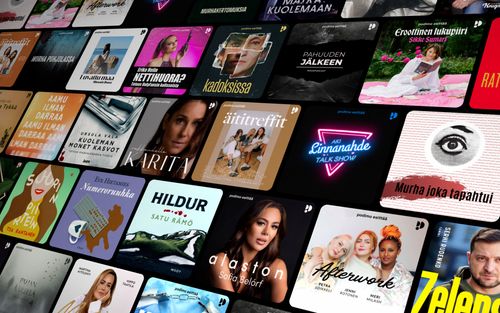EJ Mason talks about CP and how cramps impact internet use
A11y Rules Soundbites - Podcast tekijän mukaan Nicolas Steenhout

Kategoriat:
EJ Tells us about how Cerebral Palsy and how it may cause cramps, forcing him to shift how he interacts with devices. Thanks to Tenon for sponsoring the transcript for this episode. Transcript Nic: Hi, I’m Nic Steenhout. You’re listening to the Accessibility Rules soundbite. A series of shot podcasts where people with disabilities explain their impairments, and what barriers they encounter on the web. Thanks to Tenon for sponsoring the transcript for this episode. Tenon provide accessibility as a service. The offer testing, training, and tooling to help fix accessibility fast. Today I’m speaking with EJ Mason. EJ is an accessibility specialist with Pearson who does quite a bit of good work accessibility wise, and higher education. Hi EJ, how are you? EJ: I’m great, how are you? Nic: I’m doing good. I’m really happy to speak with you. We’ve been interacting on Twitter for a while but finally, we get a chance to catch up. EJ: Right. Nic: So, EJ, tell me what’s your disability or your impairment. EJ: Alright, So I was thinking about this, and I realized I have quite a laundry list. So, stick with me for a second. Nic: Fair enough EJ: I have a form of Cerebral Palsy called Spastic Diplegia. Basically, that means my left side is not as good as my right side. I’m a bit weaker there. And, because of that, I’m prone to cramps, and things like that. I also have extremely near-sighted vision, and I’m hard of hearing. And I have undiagnosed ADHD. Nic: Right. Yeah, that’s a good lot of different conditions that would have an impact on your activity of daily living. But, since we are talking about web accessibility … what would you say is the biggest barrier you’ve experienced on the web? EJ: Well, I do have some privilege in that the web doesn’t have many show-stopping barriers for me but there are things I notice that can make my life very difficult. For instance, when I’m having cramps I become a keyboard user because I can’t hold the mouse very well. It hurts to do that. And so when people don’t make their websites easy to use with keyboards I can’t really accomplish tasks or it takes me a long time to wait and pick up my mouse again and finish the task. Nic: Yeah, you know, that’s interesting. I’ve been doing accessibility for nearly a quarter of a century now and I’ve never actually spoken with anyone who describes this concept of, you know, you’re a mouse user but when your disability means you are experiencing cramps you actually have to switch input. So, that’s quite interesting. EJ: Yeah, I think that many users are multimodal inputs of some kind. We switch from being desktop users to mobile users. We juggle mouse and keyboard all the time. Even people who aren't powered users can pick up the keyboard and do stuff occasionally. But, sometimes I have to use the keyboard because it hurts to hold a mouse, and other things, I think, would be I have low vision. I have pretty good color vision, actually, but small text is pretty hard for me to see. So, I know if I can’t see something it’s a pretty big problem. If it’s too small or if it’s too low contrast. And that’s a big problem for me. Or, if I’m watching any video content… I can hear pretty well, I can hear what they’re saying to me, but when I’m watching content and there’s any kind of clutter I need captions because my brain does not process audio very well. So, I wouldn’t be able to have fun with videos on Facebook or Netflix if they didn’t have captions. Nic: Captions is definitely something that I think obviously benefits people with hearing impairments, but it’s so good for everybody. EJ: Right Nic: Everybody benefits from that. EJ: Yeah, if it’s too loud for you to hear you can still follow the content. Or, if maybe you… it’s a foreign language to you it’s a lot easier to understand what someones saying if you can also read what they’re saying. Nic: Yeah,

